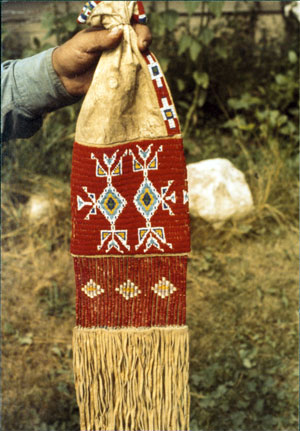 |
|
|
| OR |
|
|

|
|
|
|
|
|
(Nicholas) Black Elk’s life and work
|
|
This site includes (Nicholas) Black Elk’s biography, photos, links, and more.
|
|
|
|
|
|
|
Black Elk (1863-1950), whose Indian name was Hehaka Sapa, was a renowned Oglala Sioux spiritual leader and medicine man. He was the second cousin of Crazy Horse. Black Elk participated, at about the age of twelve, in the Battle of Little Big Horn of 1876, and was wounded in the massacre that occurred at Wounded Knee in 1890. He left the reservation in 1886 and toured with Buffalo Bill's Wild West Show in Europe, returning in 1889.
Black Elk married his first wife, Katie War Bonnett, in 1892. She became a Catholic, and all three of their children were baptized as Catholic. After her death in 1903, he too became baptized, taking the name Nicholas Black Elk, and continued to serve as a spiritual leader among his people, seeing no contradiction in embracing what he found valid in both his tribal traditions concerning Wakan Tanka (The Great Spirit), and those of Christianity.
Black Elk met the poet John Neihardt in 1930, a meeting that resulted in the book Black Elk Speaks
(1932). Black Elk dictated his autobiography to Neihardt and recounted Lakota history and traditions in an effort to preserve them. In 1947, Joseph Epes Brown met Black Elk in Nebraska. Brown spent the next winter with the elderly spiritual teacher in Manderson, South Dakota. Through that contact and their conversations, Black Elk provided the details of seven traditional rituals of the Oglala people which Brown published as The Sacred Pipe. The rites described included the purification ceremony (the sweat lodge), crying for a vision, female puberty, marriage, soul-keeping, throwing the ball, and the greatest medicine of all traditional Plains people, the Sun Dance.
The new edition of Brown's other classic book, The Spiritual Legacy of the American Indian, contains previously unpublished correspondence from Brown during his time on the reservation, which sheds new light on the debate on whether Black Elk was indeed a sincere Catholic, as well as recording many of Black Elk’s observations on modern ways and traditional Indian spiritual values. Another World Wisdom book, Indian Spirit, contains numerous excerpts of Black Elk's words taken from various sources.
 |
|
The words of Black Elk are recorded in sections of the following World Wisdom books:
|
|
All rights reserved. Contact our webmaster for permission to reproduce.
|

|
This is a photograph of Thomas Yellowtail holding a sacred pipe bag that originally belonged to Black Elk, the famous Sioux holy man. Black Elk gave the pipe bag to Joseph Brown in 1947, Brown gave it to Frithjof Schuon in 1949 and Schuon then gave it to Yellowtail in 1953. It remained one of Yellowtail’s most prized possessions until his death in 1993. Read footnote 15 on pages 16 and 17 in an interview in the online journal Vincit Omnia Veritas with Michael Fitzgerald, Yellowtail's adopted son, for more details on this story..
|
|
|

|
The Wikipedia page on Black Elk has some good links and some additional biographical information on Black Elk. However, to understand the history and spiritual nature of this great figure of American Indian spirituality, readers can do no better than to read John Neihardt's Black Elk Speaks and Joseph Epes Brown's The Sacred Pipe: Black Elk's Account of the Seven Rites of the Oglala Sioux.
|
|
|
|
|
|
|